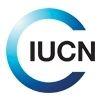|
|

Field Monitor (Project site in Pabna , Sirajgonj and Nator)
|
The overall goal of this technical assistance project reads as follows: The implementation of the INRMS (Integrated Natural Resource Management System) through wetland dependent people contributes to secure and restore biodiversity and their livelihoods in wetland and floodplain areas in the Pabna District.
The project aims to implement innovative and alternative forms of sustainable use of natural resources in open freshwater river zones (including chars) and floodplain ecosystems (closed and open beels, canals, floodplain). INRMS involves an integrated approach to water, fishery and land management. These innovative actions for natural resource management are expected to include: wetland sanctuaries; excavation of silted up water bodies; restrictions on harmful practices such as dewatering, harmful gears, and hunting; closed seasons; appropriate management of sluice gates to permit timely fish migration; and adoption of traditional or new crops that are consistent with maintaining more water in the dry season for fish.
The project has already carried out baseline biodiversity monitoring studies during 2010 - 2013 and identified varieties of fish, birds, herpetofauna and Asian River Dolphin (Platanista gangetica) in the project area as well as variation among sites, threats and conservation issues.
In total 50 fish species (including shrimps) were recorded. Overall the catch was dominated by two small species of fish – Jatputi (Puntius sophore) and Bojuri Tengra (Mystus tengara) – which made up about half of the overall catch. Fish species diversity was found higher in beel/ wetland systems compared to river systems (WBRPM 2010). In total 18 (33%) out of 54 species of freshwater fish considered to be nationally threatened were recorded, this means 36% of species recorded are nationally threatened (WBRPM 2010).
A total of 94 bird species were recorded, of which 36 are water bird species and 51 are considered wetland dependent and 12 species of birds of prey (WBRPM 2010). Overall, bird species diversity and numbers have been found to be higher in the Jamuna river system compared to the wetland (beels, haor) system (WBRPM 2010, 2012).
Study on herpetofauna was also carried out and sighted 10 species (1 Toad, 9 Frogs) of amphibians and 22species (4 Turtles, 8 Lizards, 9 Snakes, 1 Crocodile) of reptiles. Gharial (Gavialis gangeticus) – one of the most critically endangered reptiles (IUCN Red Data Book 2011) was also found in the Padma river adjacent to the WBRP area (WBRPM 2010).
In an initial study (WBRPM 2010), a population of at least 12 Ganges River Dolphins, at an encounter rate of about 0.5 per km, were recorded in approximately a 22km stretch of the river from the Khageswari outfall-confluence downstream to the Padma confluence of the Jamuna River (see Map).Subsequently thorough surveys (WBRPM 2011) in approximately 79 km stretch in five transects were conducted.
In addition to faunal species, the wetlands are rich in floral diversity. Mainly trees species diversity was surveyed in recent years. Also new tree plantation was done in some wetlands and homesteads of beneficiaries.
The present study will consider all the baseline biodiversity monitoring studies for evaluating the impacts of the WBRP project interventions to improve the biodiversity of flora and fauna in the project areas as specified in the ToR. Detail methodology of the biodiversity monitoring survey and detail work plan are given in the following sections.
The Field Monitor will have following responsibilities:
• Collect field data as method described in the monitoring work plan;
• Assist Chief Investigator and other experts to finalize monitoring methods in the field sites;
• Assist Chief Investigator and other experts to organize meetings and workshops;
• Assist experts in drafting monthly, quarterly and special reports on ongoing activities;
• Undertake any other tasks that may be assigned as and when deemed necessary.
|
• Bachelor's Degree in Zoology or a related field. • Demonstrated knowledge on wildlife related data collection, processing and compilation, PRA, RRA etc. • Excellent written and spoken skills in Bangla language is essential • Willingess to be based at the project site in Pabna , Sirajgonj and Nator. |
Applicants are requested to apply online through the HR Management System, by opening the vacancy announcement and pressing the "Apply" button.
Applicants will be asked to create an account and submit their profile information. Applications will not be accepted after the closing date. The vacancy closes at midnight, Swiss time (GMT+1 / GMT+2 during Daylight Saving Time, DST). Please note that only selected applicants will be personally contacted for interviews.
Other job opportunities are published in the IUCN website: https://www.iucn.org/involved/jobs/
About IUCN
IUCN is a membership Union uniquely composed of both government and civil society organisations. It provides public, private and non-governmental organisations with the knowledge and tools that enable human progress, economic development and nature conservation to take place together.
Created in 1948, IUCN is now the world’s largest and most diverse environmental network, harnessing the knowledge, resources and reach of more than 1,400 Member organisations and around 16,000 experts. It is a leading provider of conservation data, assessments and analysis. Its broad membership enables IUCN to fill the role of incubator and trusted repository of best practices, tools and international standards.
IUCN provides a neutral space in which diverse stakeholders including governments, NGOs, scientists, businesses, local communities, indigenous peoples organisations and others can work together to forge and implement solutions to environmental challenges and achieve sustainable development.
Working with many partners and supporters, IUCN implements a large and diverse portfolio of conservation projects worldwide. Combining the latest science with the traditional knowledge of local communities, these projects work to reverse habitat loss, restore ecosystems and improve people’s well-being.
www.iucn.org
https://twitter.com/IUCN
